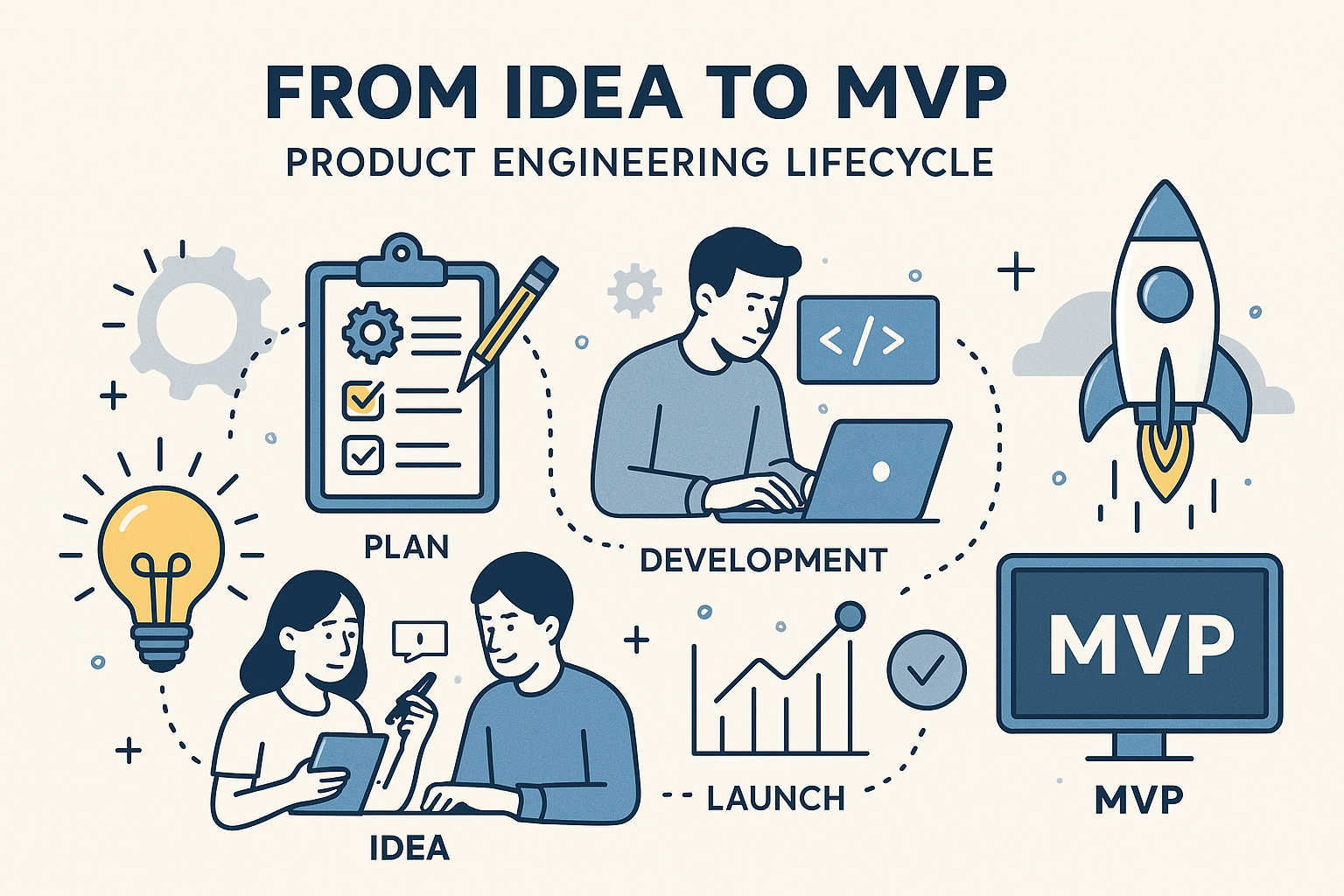Every breakthrough product begins as a simple idea. But how that idea evolves into a Minimum Viable Product (MVP) defines its true potential.
Why Start with an MVP?
A Minimum Viable Product (MVP) is not just a lighter version of a product—it’s a focused, strategic experiment. It helps you validate your core hypothesis with real users, with minimal time and resources invested. The MVP mindset answers: What’s the least I need to build to prove this product has value?
By releasing early and learning fast, companies reduce waste and accelerate market feedback loops.
Key Stages in the Product Engineering Lifecycle
1. Idea Validation
Start by identifying a clear user pain point or market
Use tools like surveys, user interviews, or competitor benchmarking to test assumptions before writing a line of code.
2. Requirement Scoping
Define the core features that deliver the product’s primary
Avoid the trap of over-engineering—focus only on what’s essential to test the
3. Architecture Planning
Choose tech stacks that support speed and
Keep things modular—you’re building a foundation, not the skyscraper
4. Rapid Prototyping
Develop clickable mockups or functional wireframes to align stakeholders
Tools like Figma or Balsamiq enable fast iterations before committing to full
5. MVP Development
Build with agility: prioritize iterative sprints, continuous feedback, and flexible
Engineering should stay closely synced with product and design to reduce
6. Testing and Feedback Loop
Launch to a controlled user group or early
Use both qualitative (user interviews) and quantitative (analytics) data to shape next steps.
7. Iteration and Scaling
Based on early feedback, refine the MVP or
Once the product shows traction, plan for architecture enhancements, feature expansion, and go-to-market strategies.
Cross-Functional Synergy
Great MVPs come from tight collaboration. Product managers define the what, engineers execute the how, and designers shape the how it feels. A culture of experimentation and ownership accelerates progress.
You also need early DevOps enablement—CI/CD pipelines, automated testing, and basic observability from day one prevent MVPs from becoming unmaintainable prototypes.
Conclusion
Turning an idea into an MVP isn’t about cutting corners—it’s about maximizing learning per unit of time. It demands clarity, collaboration, and a bias for action. The sooner you get your product into users’ hands, the sooner you start building what truly matters.
In the lifecycle of product engineering, MVPs mark the beginning of real-world validation— and that’s where ideas start to grow into businesses.





